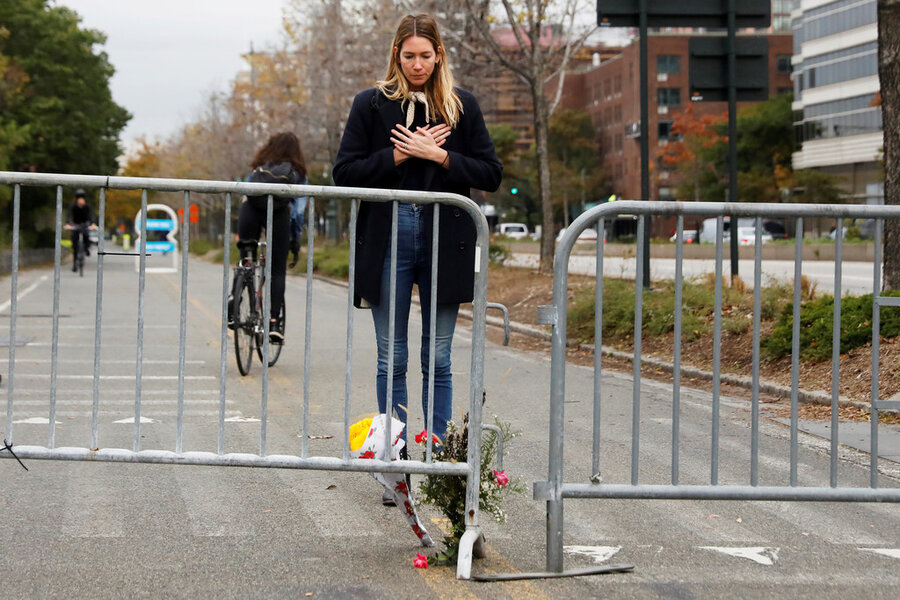New York’s response to a truck terrorist
Loading...
In defiance of the fear-based approach to terrorist acts by most news media, New York Gov. Andrew Cuomo announced after the Oct. 31 truck attack in Manhattan that the killing spree by one young man “did not instill terror” among New Yorkers. Indeed, the city’s Halloween parade was not canceled. Life mostly went on.
And the governor’s point was made. We must not be complicit in the Islamic State’s aim of spreading self-debilitating fear.
The Islamic State (ISIS) appears worried that an attitude of calm and aplomb is prevailing. The militant group has lately lost its strongholds in the Middle East, not only to superior military forces but also to the lack of support among Muslims forced to live under its rule. Yet New York police officers reported that the driver of the truck, Sayfullo Saipov, left handwritten notes that essentially said ISIS will “endure forever.”
Not quite. What really endures does not rely on regular acts of violence against innocent people.
ISIS keeps sowing the seeds of its demise by nudging its dispersed followers into violence, such as vehicular attacks.
The motives or mental state of the perpetrators as well as whether they are caught matters less than how people react to their violence. Was there unnecessary panic beyond the immediate scene that caused harmful overreaction? Did journalists, politicians, and others quell fears or exploit them? Did terrorism experts agree on the best steps in preventing more attacks?
The desire to understand motives is understandable. It is a sign of a hope that society can reach would-be terrorists in time. In Mr. Saipov’s case, a preacher at his mosque in Tampa, Fla., tried to calm his extremism. “I used to tell him, ‘Hey, you are too much emotional. Read books more. Learn your religion first,” the preacher told The New York Times.
Such words of calm to a troubled individual are the necessary opposite to ISIS’s tactic of provoking a contagion of fear. The best reaction to terror is to double down on providing the light of hope and unity. That, and not numbing, self-perpetuating fear, is the best answer to hate and violence.







